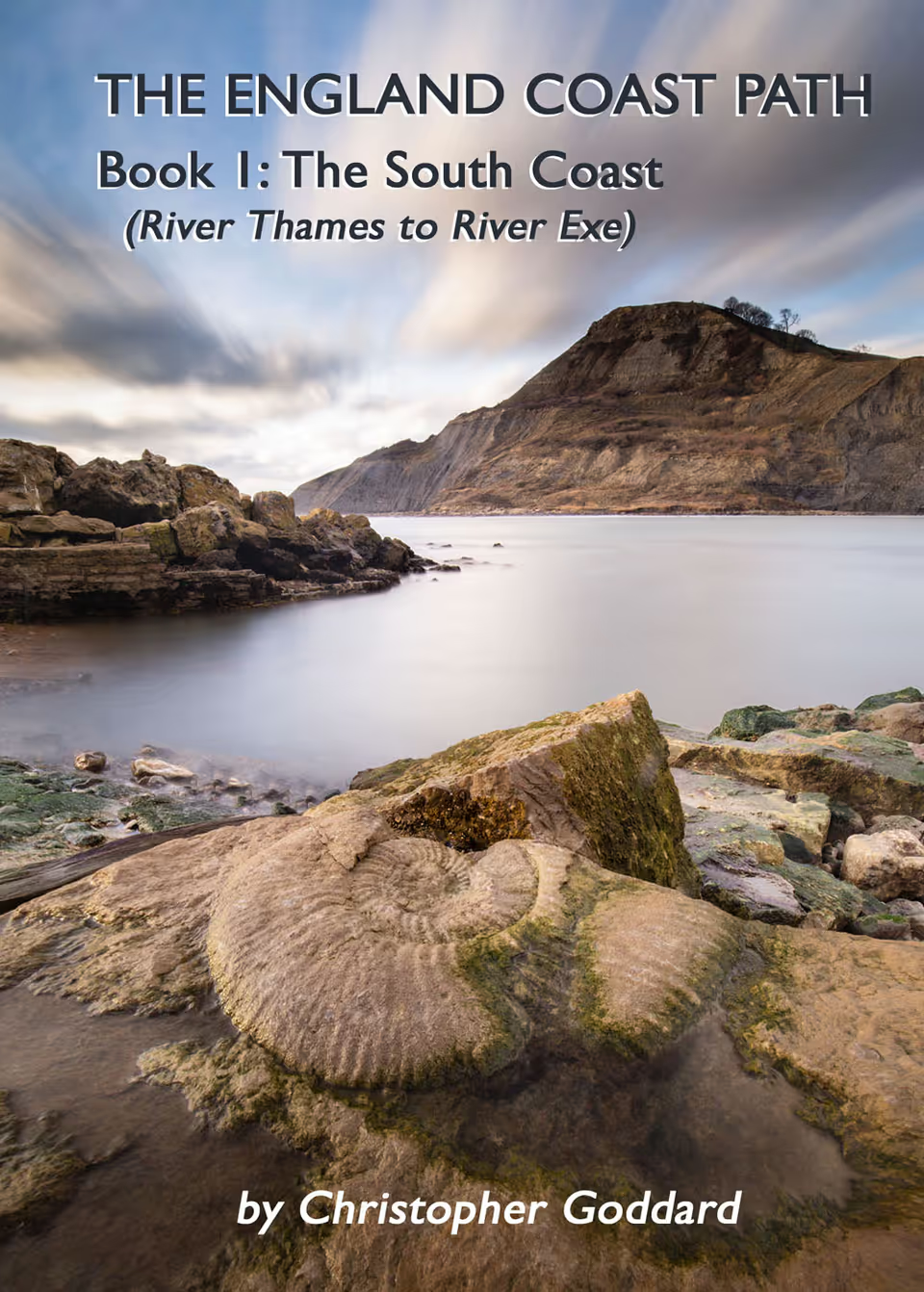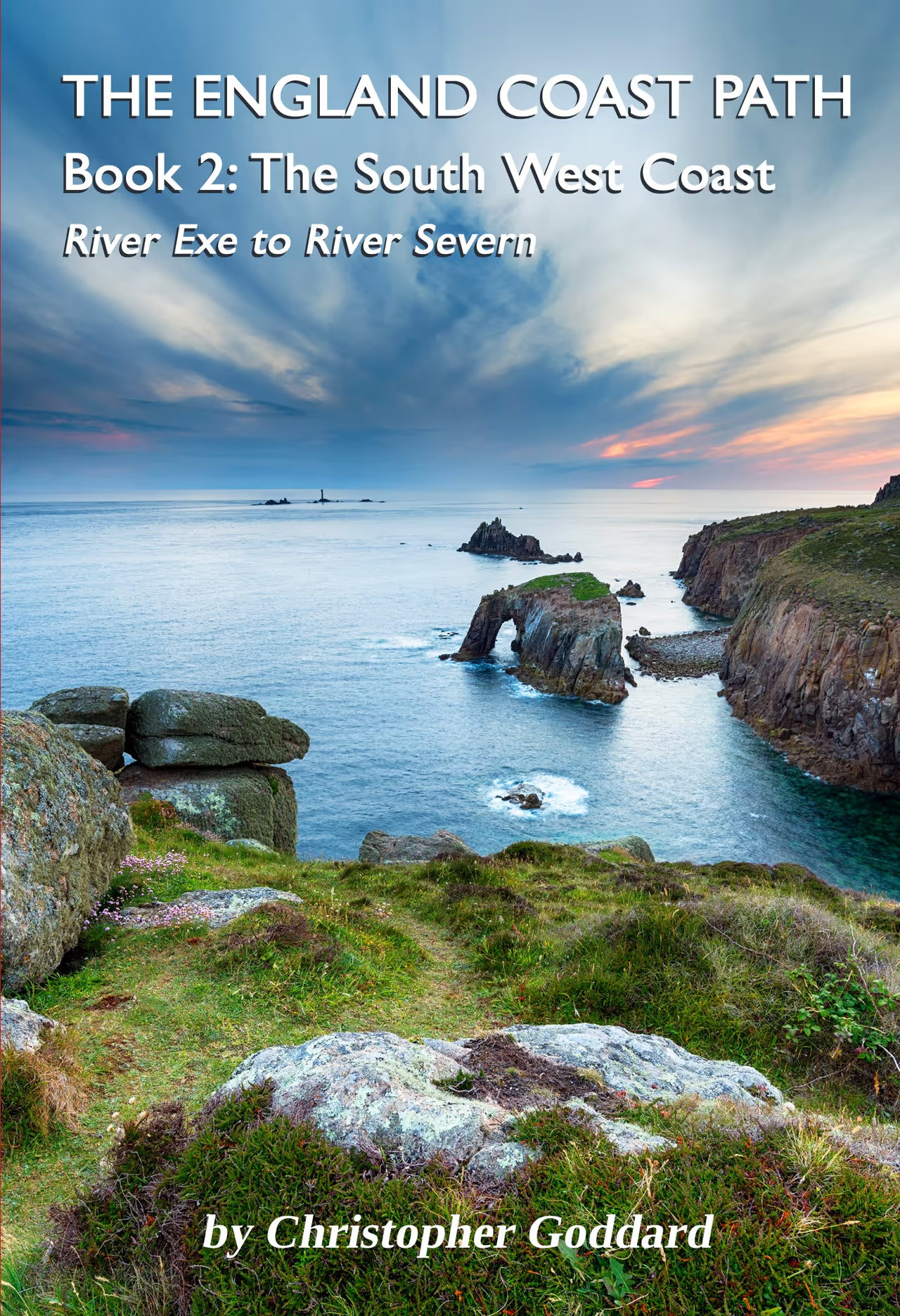Postcards from the South West Part I
Share this page

I have spent the last couple of weeks touring around the whole south west coast from Bristol to Land’s End and back to Southampton. The primary goal was to spread the word about my new book on the south west part of the England Coast Path (link). As ever I have been wonderfully surprised by the support I have received from small outlets – independent book shops, gift shops, museums and information centres – who have stocked a book by someone just walking in off the street carrying a box. In fact I’ve found this approach works better than phoning ahead, emailing information and trying to set up meetings. As long as the right person is there, they open the box with fresh eyes and I love watching their joy at leafing through my books, finding their own local of the path, then being delighted at some nugget of information or choice of song for the day. But the trip has also given me time to revisit some of my favourite places at a time of year when spring is trying to blossom fully and the south west, while still blissfully quiet, is just starting to feel like paradise. Here are some postcards from these places along the north coast of Somerset, Devon and Cornwall.
East Quantoxhead
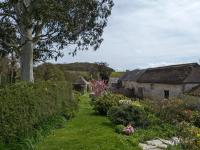
I turn off the busy A39 at East Quantoxhead as I need to escape its slow drawl and find somewhere to make my lunch. The lane narrows until it opens in a field beside a small pond at its end. I struggle to park in what likes muddy ground until someone leaves and I draw up on the grass. I kick off my crocs and slip my feet into lush grass for the first time this year as the sun pours down on a mid-April afternoon. After a sandwich, I son’;t head for the shore, which is just half a mile away, but wander this quiet hamlet. All around it flowers bloom and vegetation seems to be springing to life in a way it definitely isn’t 200 miles north. I soak up the suns rays and the smell of spring, nectar in the hedgerows around me. I wander up to the the church, reached only on foot, where the stone walls preserve the only cool of a previous season. Outside I gaze at a vision of England it is hard to summon in the north. Most of the land here is private and estate owned, but that is rich in vegetation and lazy behind its redolent walls. There is no movement but a single tractor up the lane and the distant main road looking up towards the heathery slopes of the Quantocks. I sense spring for the first time properly, I feel it warm my soul, I realise the promise of better things to come, and I don;t to leave this idyll.
Ilfracombe
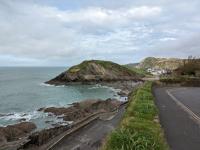
I have long wanted to spend more time in Ilfracombe. It’s geography begs you to visit, sandwiched between a series of sharp hills and a jagged shoreline, with an unlikely harbour sheltering amid the layers of serrated Devonian slate. However, when I park up and head out for the night, I find its pubs disappoint greatly and I end up in the Wetherspoons whose architecture dominates part of the town as much as the nearby Landmark Theatre. But really all I want to do is wander down to the harbour and hear the clang of shackles in the wind and fishermen gathering in the dark on the harbour arm. Their chatter rises into the outstretched arms of Verity, a 66-ft statue that tower above them on the quay. I gaze drunkenly at Damien Hirst’s statue and stand in awe of her form and presence. I am in love and can think of few greater statuesque presences.
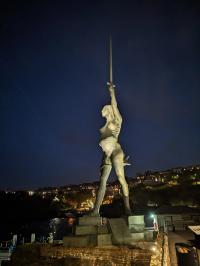
Tearing myself away from her, I find a step over the harbour wall that leads straight from the kids smoking and playing tunes in their car to the foreshore, where waves crash at high tide against the rocks. Scrambling behind a rock in my smart boots unsuited to the activity, the light of the town disappears and I sit down on a sharp ledge to watch the waves crash a short distance below. I open a can of Salty Kiss, as appropriate as any to savour the deep power of the waves, which surge several metres up the rock and hurl spray at my feet. It is for this reason I am sad I have never lived by the sea, the ability to sake solace in the raw energy of the sea at any turn. Nowhere else changes like this, reminds you of your subservience like the sea.
Clovelly Dykes
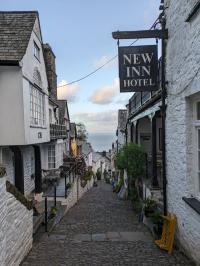
Clovelly is well known as the site of a tiny fishing village that snakes steeply up the hill from the rocky Devon shore and is beautifully preserved as an estate village. In fact the whole place is owned by the Rous family and you have to pay to enter the village through the gift shop (even though the main thoroughfare is still a public highway). What you might think of as a dead village is actually the exact opposite. Where so many other little fishing villages in the south west have been transformed into second home and Airbnb dormitories with no facilities – neighbouring Buck’s Mills is a great example, having only one permanent resident left – Clovelly is thriving. All of the houses are rented and lived in by permanent residents and support the existence of two pubs all year round, so apparently I have to lift a toast to the feudal system.
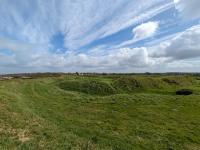
However, the real marvel of Clovelly is easily by-passed on the junction with the main road. Spread across the surrounding fields and covering over 20 acres, Clovelly Dykes stands out on the OS map, but otherwise is invisible to the passing traveller. Only when you follow the lanes around it do you appreciate the great banks massed on the hill above. I stop in a lay-by and follow a previously-used cut over the first embankment to emerge in a densely-vegetated dyke that surrounds the whole site. To access the rest I have to climb a fence as Clovelly Dykes is on private land, but what emerges as I cross the field to climb row after row of embankments is a remarkable site that it feels should be accessible to the public. The higher banks of what seem to be some sort of inner sanctum stand 2-3m high and give a great view over what appear to be 5 different ditches and several inner banks. The scale is very impressive, reaching beyond the B3237 and enveloping the nearby houses. It is generally thought that Clovelly Dykes served no defensive purpose, but that it was some sort of grand ceremonial site to one of the Dumnoniae tribes in the region. There would have been seasonal gathering here and important rituals, with most of the outer dykes designed to contain livestock brought here for sacrifice or sale. As a cathedral of the early Bronze Age, it deserves far more recognition, but then I much prefer scrabbling through the undergrowth to discover such gems than entering through a visitor centre.

The England Coast Path - Book 2: The South West Coast
£15.99A practical guidebook for walking over 650 miles of the England Coast Path from the River Exe to the River Severn. Starting in Exmouth and finishing in Chepstow, this book covers the coasts of Devon, Cornwall, Somerset & Avon.
Buy NowTrewethett Mill

The Rocky Valley flows down from St Nectan’s Glen to reach the sea between Tintagel and Boscastle on one of the most special sections of coastline in Cornwall. Upstream is the much-photographed St Nectan’s Kieve waterfall and a couple of miles away Tintagel Castle. It is an area filled with historical romance, as well as more than its fair share of crystals, but the most remarkable site lies on an unassuming cliff face behind the ruins of Trewethett Mill. The Rocky Valley reaches its apex at a series of sculpted pools, through which a torrent surges powerfully today – if not I may have fancied a dip. A path leads past the pools and beneath rocky tors to follow the beautiful stream into the trees. The valley is lush and the slate ruins of the mill appear uncertainly through the undergrowth. The floor of each of the rooms is deep in mud, but I still explore its dark corners.

On the way out I catch a glimpse of a notice on the rock wall and it is the word ‘probably’ that jumps out to me. It is a word only ever used to refer to prehistoric things of whose age we cannot be sure. A closer look reveals a reference to Bronze Age labyrinth carvings, and then the penny drops – this is the place I’d been meaning to go, but totally forgotten about. Yes I wanted to try to sell my book at St Nectan’s, but the real reason I was drawn to return here was this site. I desperately searched the wall for the carvings and it took me a few moments to locate the pair of circular maze patterns hewn into the cliff, identical and far smaller than I expected. I leaned forward to admire the intricacy of the carving as one does when looking at a Dali painting. They are so well preserved they appear as if they had been done yesterday by some kids or some Victorian pranksters, yet they are a very special link with our distant past.
Tintagel Castle
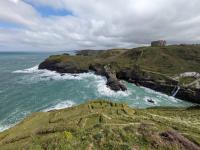
I have gone to Tintagel Castle because I could get in free with my dad’s English Heritage card. I have traipsed around the headland (it is not quite an island, though it does require crossing a bridge to reach it) with all the other tourists, but it is hard to get excited about medieval banqueting halls and the Earl of Cornwall’s travails. Peering over the cliffs though you do look down on a series of low walls perched perilously above the sea. These represent the buildings of what was a substantial dark age settlement on the headland; long before the castle was built, people eked out an existence here that is far more interesting that what followed.
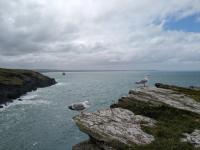
There is relatively little mention of King Arthur at the castle, other than the Bronze statue of him on the headland. While people take photos of Gallos, I head down the rocks to perch on the cliff edge with my lunch. With only the gulls for company, I watch the waves smashing hard into the rock walls that form the coastline here and wonder that they loaded boats with slate against these very cliffs. Whatever King Arthur might have been, he never knew Tintagel Castle – it arrived later and the romance invented by Geoffrey of Monmouth in the 12th century. Don’t tell anyone in Tintagel though, or all those crystal/healing/legend gift shops have got a problem. The gulls know it’s all a hoax. They perch ever closer on the rocks, just a few feet away now. Their call is softer close up as they appear to be talking to each other. ‘He’s nearly finished his sandwich.’ ‘He’s dropped a bit there.’ ‘It better not be vegan cheese!’
Zennor
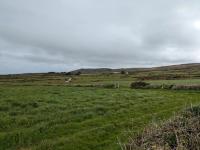
The finest road in England runs for 8 miles from Pendeen to St Ives, winding intricately through a landscape that feels truly ancient and primeval – only in the north-west of Scotland can you get a similar vibe while at the wheel. On a Tuesday morning in April there is nothing on the road and I can soak in the north-west coast of Penwith. Rugged granite tors mark the coastline below, as well as cresting the wild heaths above, which are full of prehistoric sites; quoits, settlements and the famous Men-an-Tol (‘stone of the hole’). Much of the land is covered in a dense barrage of gorse, bracken and brambles that makes it hard to explore more than few miles off the road and is still a russet orange that gives a sombre air to the morning. The whole landscape is broken up by an intricate pattern of Cornish hedges, composed of huge granite blocks that have been cleared from the fields then covered in earth and vegetation. Many of the fields are abandoned and the hedges allowed to collapse in places, so it feels at times like you’re looking out at a Bronze Age landscape.
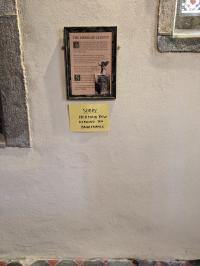
I stop in Zennor, the only real village on this stretch of remote coastline. There is nowhere to sell my book, but I wander the green lanes as people work on the outside of the pub. There is no other sound and I go in to St Senara’s Church, remembering that I never did see the Mermaid’s Chair that I had written about. I scan the pews and every corner of the austere granite building, but cannot find this exquisite 16th-century carved pew. Wondering if I had got the information in my book wrong, I notice a sign – ‘Sorry, Mermaid Pew removed for maintenance’. As with so many of these places, I shall have to return.

The England Coast Path - Book 1: The South Coast
£15.99A practical guidebook for walking over 700 miles of the England Coast Path from the River Thames to the River Exe. Starting in Woolwich and finishing in Exmouth, this book covers the coasts of Kent, Sussex, Hampshire, the Isle of Wight and Dorset.
The England Coast Path - Book 2: The South West Coast
£15.99A practical guidebook for walking over 650 miles of the England Coast Path from the River Exe to the River Severn. Starting in Exmouth and finishing in Chepstow, this book covers the coasts of Devon, Cornwall, Somerset & Avon.
